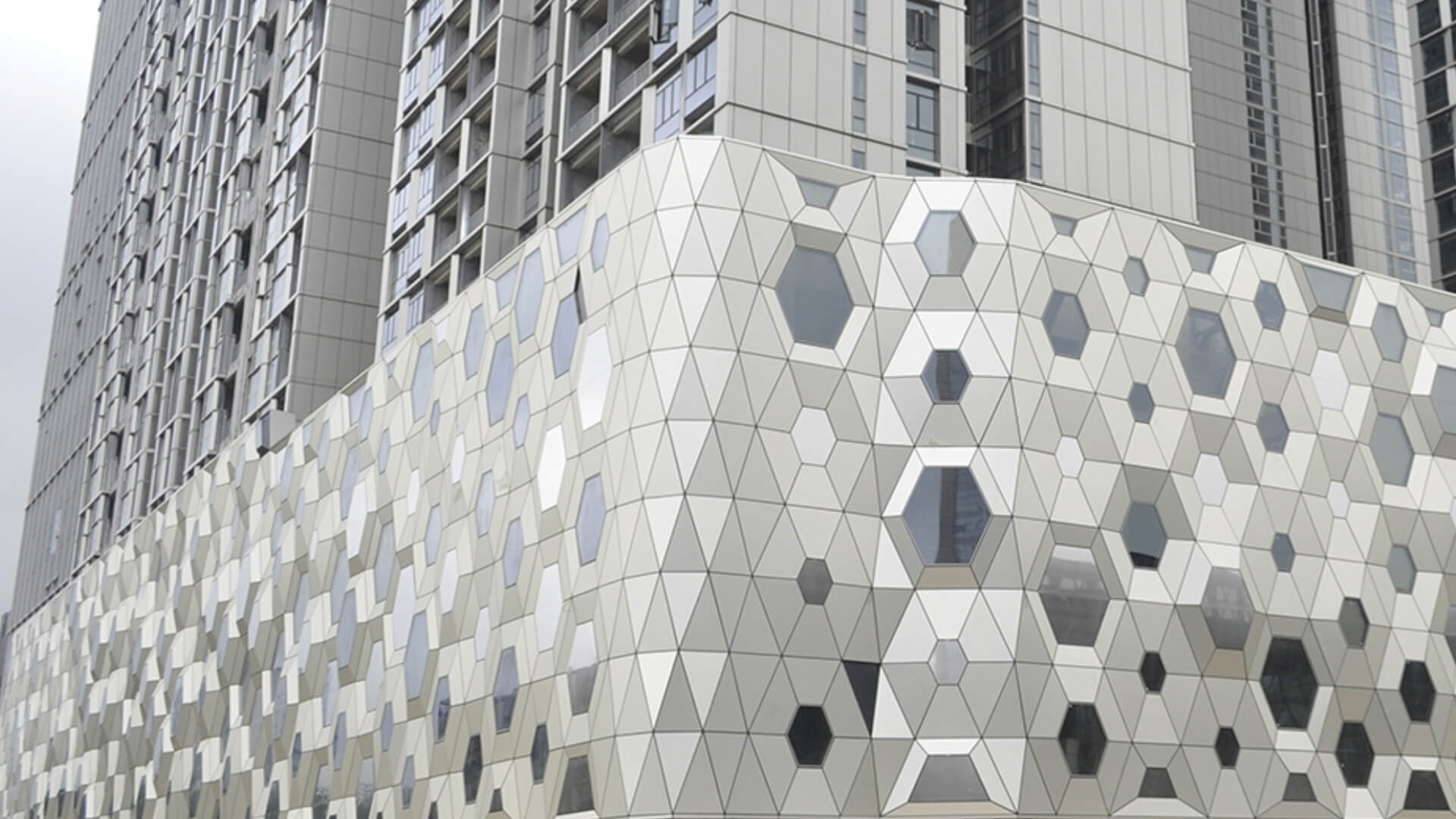It resists even the most extreme stresses and represents the best ally in the construction world. It is aluminium, a material that best expresses its potential in the building façade design. Durable and safe, aesthetically customisable, and malleable, sustainable and energy efficient, with high technical characteristics and performances, aluminium in architecture is certainly among the most suitable materials to make buildings appealing, resistant and functional. Its applications are various, both in structural terms and as regards the cladding.
Designers from all over the world have experimented with the different ways of using aluminium in façades, collaborating with companies to define customised surfaces, in shapes and sizes, which adapt to contexts without interfering with the surrounding environment or which become high-impact landmarks.
What is an aluminum façade?
An aluminum façade, essentially, refers to the external facing of a building that is primarily composed of aluminum or its alloys. This choice of material brings forth a multitude of advantages, making it a favoured option for modern architecture.
The innate properties of aluminum, such as its lightweight nature, high strength-to-weight ratio, and resistance to corrosion, translate into façades that are not only structurally sound but also enduring against environmental challenges.
Moreover, aluminium’s versatility allows for a wide array of finishes and colours, enabling architects to achieve specific aesthetic goals without compromising on durability or maintenance requirements.
The adaptability of aluminum façades extends beyond mere appearance; they can be engineered to enhance a building’s energy efficiency by incorporating features like thermal breaks and double skin technology. This harmonious blend of functionality, aesthetics, and sustainability positions the aluminum facade as a pivotal element in the pursuit of innovative and environmentally responsible construction practices.
Different ways of using aluminium in façades
In building façade design, aluminium cladding has various applications: from renovation projects – where it can enhance the building’s properties or enrich the original building with a touch of elegance and brightness – or to develop unique architectural projects.
Moreover, thanks to the wide range of colours and finishes that it is possible to obtain through different techniques, architects can use aluminium to give a personal touch to the project.
1. Renovation to redevelop and create new works
One of the great themes of the construction world in recent years is that of renovation: the recovery of our building heritage is essential to contain the use of land to be allocated to new buildings, but above all to restore a great architectural wealth that may still exist and evolve.
Aluminium can represent the ideal choice for redeveloping the façades of buildings and makes it possible to enhance buildings also with a view to energy saving and reducing heating and air conditioning costs. If in the field of building renovation there are many possibilities for applying aluminium to give stability, efficiency, and a new look to buildings, in contemporary architecture and in the construction of new buildings its traditional use can also be accompanied by creative solutions that lead to creation of real design works of art. And the façades of the new architectures of the world are the beautiful demonstration of this.
2. Aluminium cladding and the building façade design
In the building façade design, aluminium cladding is divided into different types which can be summarized in: sheets, slats and slabs.
The large-format elements, the so-called sheet metal, are ideal for the construction of large structures and for the creation of iconic architectures. In fact, they can be worked with different procedures that make them wavy, corrugated, perforated, or decorated according to the taste and inspiration of the architects and clients. With this type of aluminium, it is possible to indulge the curious shapes of the façades, designing sinuous and malleable surfaces.
Even the slats are distinguished by the ability to follow the profile of the buildings in a flexible way; in this case, however, they have shapes of reduced dimensions in width while they can reach considerable lengths. Thus, they become extended and long strips capable of giving personality to buildings.
Compared to the two types described above, the slabs are characterized by a greater thickness and smaller dimensions.
In any case, all types of applications can contribute to the building façade design with customisable shapes and colours given that aluminium is a simple material to work with and highly flexible in its transformation.
3. Customisation and curtain walls
The aluminium cladding allows architects to create real design works. Curtain walls are an extraordinary example of how this material can make buildings shiny and appealing. Lightweight and continuous, the casings increase the aesthetic and commercial value of the projects, giving life to unique buildings of great visual impact. The aluminium panels can be completely customized both in terms of shape and in terms of finishes. Space then for innovative colour choices, which strike for audacity or on the contrary integrate harmoniously into the landscape.
Aluminium panels create plays of light and shadow when applied to asymmetrical façades: if they are cut into small pieces, placed side by side and composed like a puzzle, they create buildings that look like brilliant sculptures.
Anodised aluminium, in different colours, does not necessarily have to be square in shape: it is possible, in fact, to obtain disks to design and build imposing façades with an iridescent appearance.
The building façade design also means translating into reality the craftsmanship of embedding aluminium geometries on the architecture, to make it special and resistant to bad weather and the passage of time.

